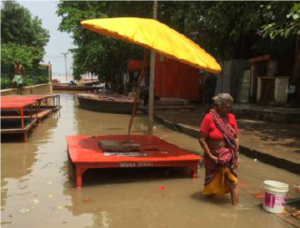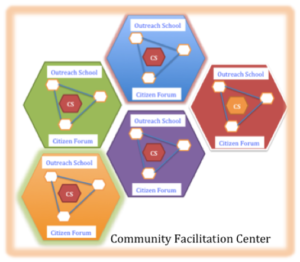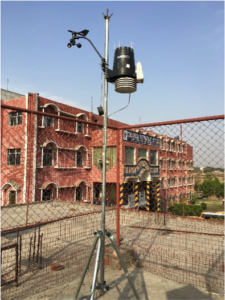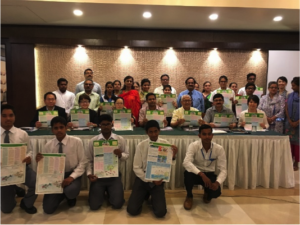About the case study:
The case study describes a unique disaster education initiative through development of climate school and involving students, teachers and communities in monitoring daily weather and environmental data and taking decisive actions of different types of climate related hazards and environmental problems in Varanasi, India. This project is implemented by a Kobe based NGO called SEEDS Asia (www.seedsasia.org), in cooperation with Benaras Hindu University (BHU), with support from Ministry of Foreign Affairs, Government of Japan under the Kyoto Varanasi Partnership Agreement intention.
Reference paper: Otsuyama M., Kakuchi S., Hayashi S., Nakagawa Y and Shaw R. (2017): Enhancing evidenced based action through informed decision: example of “Climate School” in Varanasi, India, in Shaw R., Chan E., Fang L., Lu L., Shi P., Yang S., Chan G., Wong J. (2017): Co-designing DRR Solutions: Towards participatory action and communication in science, technology and academia, ASTAAG, IRDR and CCOUC, Hong Kong, China, 6-7.
Introduction
The trends of increase in number of extreme and disastrous weather events have been observed globally. In May 2016, the highest ever temperature was recorded in India with 51 degree Celsius, furthermore, the country faced floods in the rainy season. City of Varanasi with the population of 1.75 million in Uttar Pradesh State also recorded higher than normal temperature in May and experienced severe floods in August 2016. Although Indian Meteorology Department is forecasting weather information broadly on daily basis, there is no timely information on torrential rains and measures of rainfalls in micromesh of the city.
Indian Prime Minister HE Narendra Modi Visited Japan in 2014, and started his visit with Kyoto. That time, Japanese Prime Minister HE Shizo Abe went to Kyoto to receive him. In their presence, Kyoto Varanasi partnership agreement intention was signed between the city of Kyoto and city of Varanasi. Both the cities are old cities, and have lots of similarities in terms of cultural context. As a part of the agreement intention, different levels of cooperation started between the two cities, and SEEDS Asia started a community based learning program along with its counterpart Benaras Hindu University.
Problem
 Figure 1. Flood in Varanasi in 2016
Figure 1. Flood in Varanasi in 2016
Approach / Stakeholder participation
The key partner was the five climate schools in Varanasi, which, in turn will have three each outreach schools. The teachers and students of these schools are the core project partners. In addition, the local communities, especially the resident welfare association are also involved along with the schools (Figure 2).
 Figure 2. Climate school and community facility center
Figure 2. Climate school and community facility center
Innovation
 Figure 3. Automated weather station
Figure 3. Automated weather station
Collection, evaluation and analysis of the data which are being obtained from the CS are beneficial to the academic community especially to the field of meteorological and disaster risk reduction in Varanasi. These researches are important for decision making at different level from individual to the planning of the city. The project focus at the grassroots level as initial stage, thus a series of trainings on understanding on weather and climates risk such as understanding of geographical features, rainfalls, town watching program to understand the risk and resources of neighborhood are conducted for each CS and CF. Based on their findings, mitigation measure are discussed and planned at community and school basis, then each school has identified the certain level of rainfalls when they decide to flee their students to home or to announce the cancellation of class in associated with the bad weather so that pupils would not be facing the flood unnecessarily. The accumulation of data will contribute to research outcomes, and mobile application made easy to anyone to access the timely and handy weather information, which enables them to take early decision and action.
Conclusion
 Figure 4: Launching ceremony of Prahari, attended by government officials, university, schools and community
Figure 4: Launching ceremony of Prahari, attended by government officials, university, schools and community
1.Average of temperature in Varanasi in May is 40 Celsius degree (1998 to 2012 base)
https://weatherspark.com/averages/33932/5/Varanasi-Uttar-Pradesh-India
2.According the data accumulation and observation, if rainfall 20mm per hour continues for two hours, the urban flood would occur in the city.
3.The selected five CS are 1. Central Hindu Boys School, 2. Rajghat Besant School 3. Sant Atulanand Convent School, Shri Agrasen Inter College for girls, 5. The Aryan International School in the city.